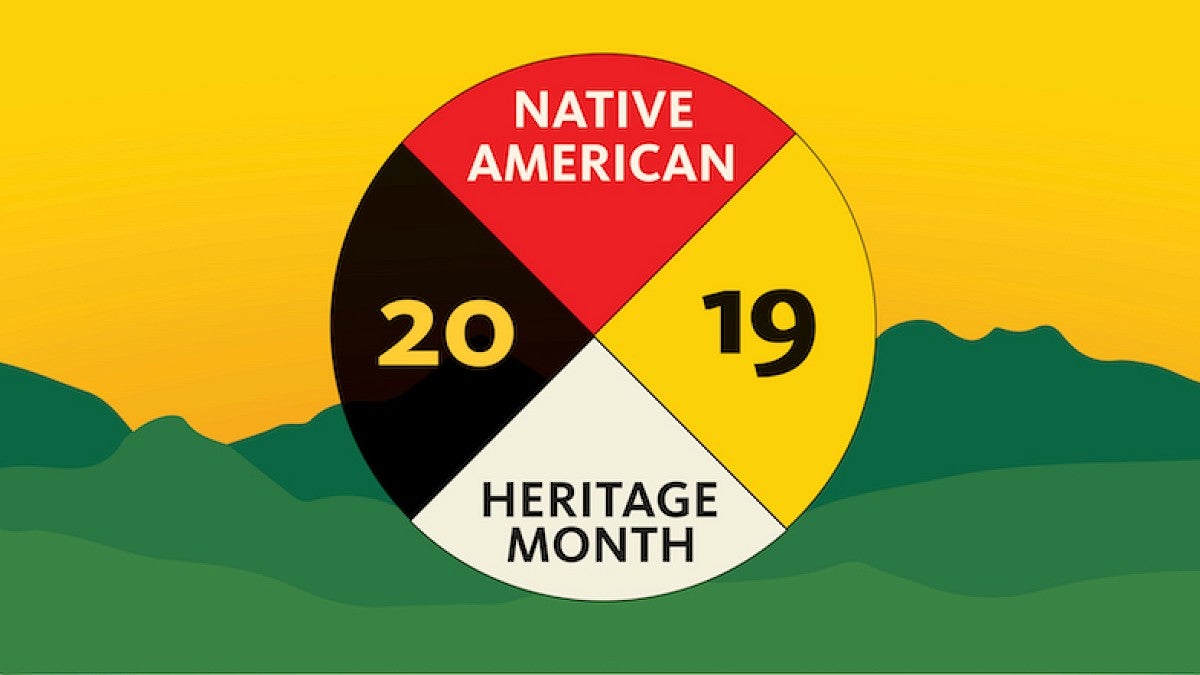Dinners, talks, films and conferences; education, law, the environment and fashion: These are some of the events and themes during Native American Heritage Month at the UO.
Throughout November, the university community will have multiple opportunities to honor, participate in and learn about the historical and current contributions, challenges and resilience of Native American communities.
“I am thrilled to see the diverse events happening on campus for Native American History Month,” said Norma Trefren, multicultural academic counselor and Native American student retention specialist, who is experiencing her first year working at the UO. “With over 570 federally recognized tribes in the U.S. and nine tribes here in Oregon, it’s important for our voices and stories to be heard.”
The Many Nations Longhouse will host free and open “Dinner, Culture and Community Nights” on Thursdays, Nov. 7, 14 and 21 at 6 p.m. The Native American Student Union will host events throughout the month. See the student union’s Facebook page for further event details.
On Nov. 1, the Native American Student Union offers a medicine pouch and beaded lanyard workshop with Dakota MacColl from 5 to 8 p.m. at the Many Nations Longhouse. An RSVP via the group’s Facebook page is requested.
Get your fill of tacos Nov. 8 from 11:30 a.m. to 1 p.m. at the Native American Student Union taco sale in the Many Nations Longhouse. The sale will help raise funds for the group’s Mother’s Day Pow Wow and Salmon Bake.
A reading of the play “Salmon is Everything” will be held Nov. 8 at 4 p.m. at the Ford Alumni Center. On Nov. 10 from 7 to 9 p.m. the Native American Student Union hosts a film screening of the “People of Western Oregon” at the longhouse.
Leilani Sabzalian will discuss her recent work, “Indigenous Children’s Survivance in Public Schools,” on Nov. 4 from 2:30 to 3:30 p.m. at the longhouse. “Indigenous Children’s Survivance” looks at the cultural, social and political landscape of indigenous education through the accounts of indigenous students and educators.
Sabzalian is an UO assistant professor of indigenous studies in education and co-director of the Sapsik’wala Teacher Education Program.
The 2019 Western Humanities Alliance conference “Engaged Humanities: Partnerships Between Academia and Tribal Communities” will center around three themes: climate change, sovereignty and place, and will explore how institutions might more productively engage tribal communities based on core principles of respect, reciprocity, consultation, stewardship and service. The two-day free conference will take place Nov. 8-9 in the Giustina Ballroom in the Ford Alumni Center and is presented through a partnership of the UO’s Native American studies program and the Oregon Humanities Center.
Mary Kathryn Nagle of the Cherokee Nation will speak on “Tribal Sovereignty: The True Origins of Environmental Law” as the guest lecturer for the 13th annual Rennard Strickland Lecture on Nov. 12. Nagle is a playwright and a partner at Pipestem Law, a firm specializing in tribal sovereignty of native nations and peoples. The free event will be at the Knight Law School at 6 p.m. with a post-lecture reception at the longhouse.
The Native American Student Union will join with the Lane Community College Native American Student Association for the first interscholastic Round Dance on Nov. 23 at the LCC Longhouse from 4 to 11 p.m. A frybread stand, a raffle and a singing contest for drum groups will be part of the event.
The month will end with a free dinner and conversation with Joey Montoya on Nov. 26 from 5:30 to 8 p.m. Montoya is a Lipan Apache multimedia artist, clothing designer and entrepreneur whose work is aimed at increasing the visibility and resiliency of indigenous peoples so they can create and fuel social change.
The event is part of the Erb Memorial Union BE Series, with sponsorship from the Native American Student Union, Native American studies, Many Nations Longhouse and the Sapsik’wala Teacher Education Program.
Native American Heritage Month, also referred to as American Indian and Alaska Native Heritage Month, has its roots in the early 20th century. In 1915, the annual congress of the American Indian Association directed its president to ask the U.S. to observe American Indian Day. The U.S. government didn't act until 1983, when President Ronald Reagan proclaimed May 13 American Indian Day, and in 1990 President George H.W. Bush signed a joint congressional resolution designating November as National American Indian Heritage Month.
In her essay “Utilizing Native American Heritage Month as a Tool for Culture Change,” Vice President for Equity and Inclusion Yvette Alex-Assensoh points to the particular importance of history this year to Oregonians. “As we celebrate Native American Heritage Month, history is an especially pertinent subject for Oregonians,” she writes.
“This is the first year that Oregon schools will be required to teach tribal history and life experiences as a result of 2017’s Senate Bill 13,” Alex-Assensoh said. “As schools work with Oregon tribes to create curriculum, it’s important for institutions like the University of Oregon to use our platform to support these efforts towards positive culture change, both by promoting tribal history throughout the year and utilizing celebrations like NAHM in particular.”
At the UO, Sapsik’wala Teacher Education Program provides a pathway for indigenous people to become teachers within their communities.
The UO is on Kalapuya Ilihi, the traditional homeland of the Kalapuya people. The Kalapuya were dispossessed of their homeland most notably in treaties between 1851 and 1855 and were forcibly relocated to what are now the Grand Ronde and Siletz reservations. Today’s descendants are now members of The Confederated Tribes of the Grand Ronde Community and The Confederated Tribes of Siletz Indians.
For further information about events and activities during Native American Heritage Month or throughout the year, check the websites of Native American studies, the Many Nations Longhouse or the Division of Equity and Inclusion or the Native American Student Union Facebook page.
—By tova stabin, University Communications


